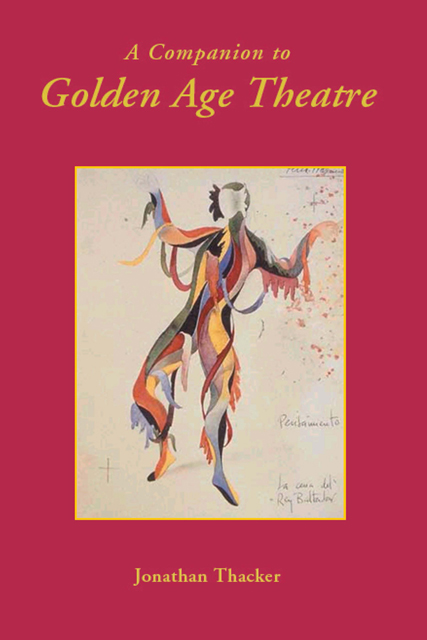Book contents
- Frontmatter
- Contents
- Dedication
- Foreword
- List of Abbreviations
- Introduction
- 1 The Emergence of the Comedia nueva
- 2 Lope de Vega
- 3 Cervantes, Tirso de Molina, and the First Generation
- 4 Calderón and the Comedia's Second Generation
- 5 Staging and Performance
- 6 Types of Comedia and Other Forms of Theatre
- 7 A Brief History of Reception
- Appendix 1 Verse Forms
- Appendix 2 English Translations of Golden Age Plays
- Suggestions for Further Reading
- Bibliography
- Index
1 - The Emergence of the Comedia nueva
Published online by Cambridge University Press: 09 May 2023
- Frontmatter
- Contents
- Dedication
- Foreword
- List of Abbreviations
- Introduction
- 1 The Emergence of the Comedia nueva
- 2 Lope de Vega
- 3 Cervantes, Tirso de Molina, and the First Generation
- 4 Calderón and the Comedia's Second Generation
- 5 Staging and Performance
- 6 Types of Comedia and Other Forms of Theatre
- 7 A Brief History of Reception
- Appendix 1 Verse Forms
- Appendix 2 English Translations of Golden Age Plays
- Suggestions for Further Reading
- Bibliography
- Index
Summary
When he appears ghost-like from the sack of flour in which he has been hiding, Lope de Vega's peasant-turned-captain, Peribáñez, fatally stabs the proud comendador, Don Fadrique, his feudal lord. The shocking murder is committed with the very sword that this noble warrior, scourge of the Moors, has girded on the peasant. However, our sympathy for the comendador is limited as the wily and principled Peribáñez has just crept into his own house under cover of darkness in order to prevent Don Fadrique from raping his wife, Casilda. For a moment, flour-encrusted and hesitant, he cuts a comic, even farcical figure, but the natural desire to laugh dies in the audience's throat as Peribáñez avenges his honour like a nobleman, and then coldly hunts down both the comendador's servant, Luján, and Casilda's cousin, Inés, adding their blood to the flour that has adhered to his perspiring body.
In many ways this scene and this play typify the new kind of drama being written in Spain at the turn of the seventeenth century. The recourses of comedy rub shoulders with those of tragedy, combining ‘Terencio con Séneca’ as Lope self-consciously put it. The separation of noble and peasant characters and their respective values is called into question. The deaths occur on stage. The characters speak here in verse, in one of nine distinct forms employed in the play, and the same octosyllabic form that Casilda and Peribáñez had used in Act 1 when innocently exchanging their alphabets of love. The night-scene would have been first performed in afternoon sun-light on a permanent but highly flexible stage: the location of the action moves between town and country, palace and peasant dwelling. Some of the characters in the play are figures from Spanish history, although its ‘source’ is probably a popular verse. Unlike in Shakespeare's England or seventeenth-century France, Casilda, Inés and all the female characters are played by actresses. The lively and socially mixed audience in the yard-turned-theatre will be united in their attention to the play, but divided over the evident upheaval in the social order: may a cat look at a king? How should one deal with a rebellious vassal? Can a marriage survive such turmoil for happiness to return?
- Type
- Chapter
- Information
- A Companion to Golden Age Theatre , pp. 1 - 22Publisher: Boydell & BrewerPrint publication year: 2007



